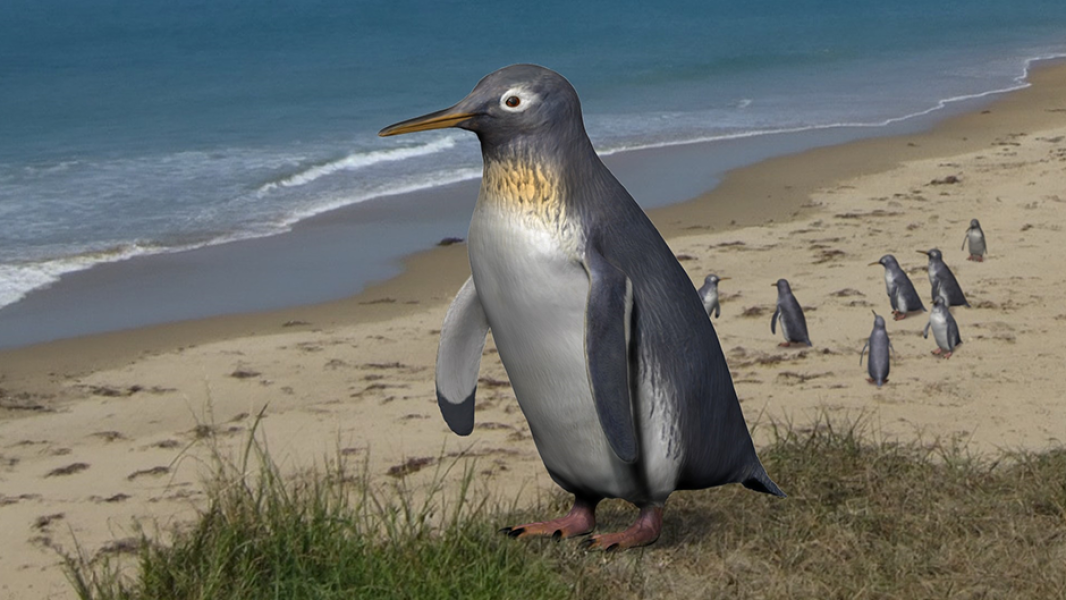
An artistic reconstruction of Pakudyptes, one of the smallest penguins ever known. (Photo credit: Tatsuya Shinmura and the Ashoro Museum of Paleontology)
A tiny penguin that walked, swam and dived along the coast of southern New Zealand 24 million years ago is the “key” to understanding how modern penguins evolved their wings, a new study has found.
Fossils of the 1-foot (0.3-meter) penguin were first discovered in the 1980s, but the species remained an evolutionary mystery for many years despite being one of the smallest penguins ever found.
A team of scientists reanalyzed the fossils and determined that they belonged to a previously undescribed species, Pakudyptes hakataramea. The name Pakudyptes comes from the Maori word “paku,” meaning “small,” and the Greek word “dyptes,” meaning “diver,” according to a study published Wednesday (July 31) in the Journal of the Royal Society of New Zealand.
The newly described species fills a significant gap in penguin wing evolution, as its shoulder joints are very similar to those of modern penguins, while its elbow joints resemble those of extinct species.
“Pakudyptes is the first penguin fossil found with such a unique combination, and it is a 'key' fossil for understanding the evolution of penguin wings,” said lead study author Tatsuro Ando, a curator at the Ashoro Museum of Paleontology in Japan.
At about 11.8–13.8 inches (30–35 centimeters) tall, P. hakataramea was comparable in size to the smallest living penguins, the little blue penguins (Eudyptula minor), and the smallest extinct penguins, the little Wilson's penguins (Eudyptula wilsonae).
The P. hakataramea fossils consist of three bones discovered in the Hakataramea quarry in South Canterbury in 1987. The team used computed tomography (CT) scans to create a virtual 3D image of the remains and then compared them to the remains of modern penguins, allowing the researchers to finally integrate this new species into the tree of life.
According to the study, P. hakataramea had dense bones like modern penguins, which would have aided swimming and diving. The hollow part of the bones, called the medullary cavity, was also similar to the bones of little blue penguins, which typically live in shallow waters, indicating that it may have led a similar lifestyle.
Most fossil penguins are large, around 3.3 feet (1 m), so this little penguin also helps researchers better understand penguin development between the late Oligocene epoch (33.9–23.03 million years ago) and the early Miocene epoch (23.03–5.3 million years ago).
“Penguins evolved rapidly from the late Oligocene to early Miocene, and Pakudyptes is an important fossil from this time,” said study co-author Caroline Loch, a senior lecturer in the Department of Oral Sciences at the University of Otago. “Its small size and unique combination of bones may have contributed to the ecological diversity of modern penguins.”
Sourse: www.livescience.com





